Search
All results
(378)
MediaInfos
(138)
News
(1)
BasicInfos
(5)
Press kits
(2)
Images
(52)
Videos
(4)
Publications
(16)
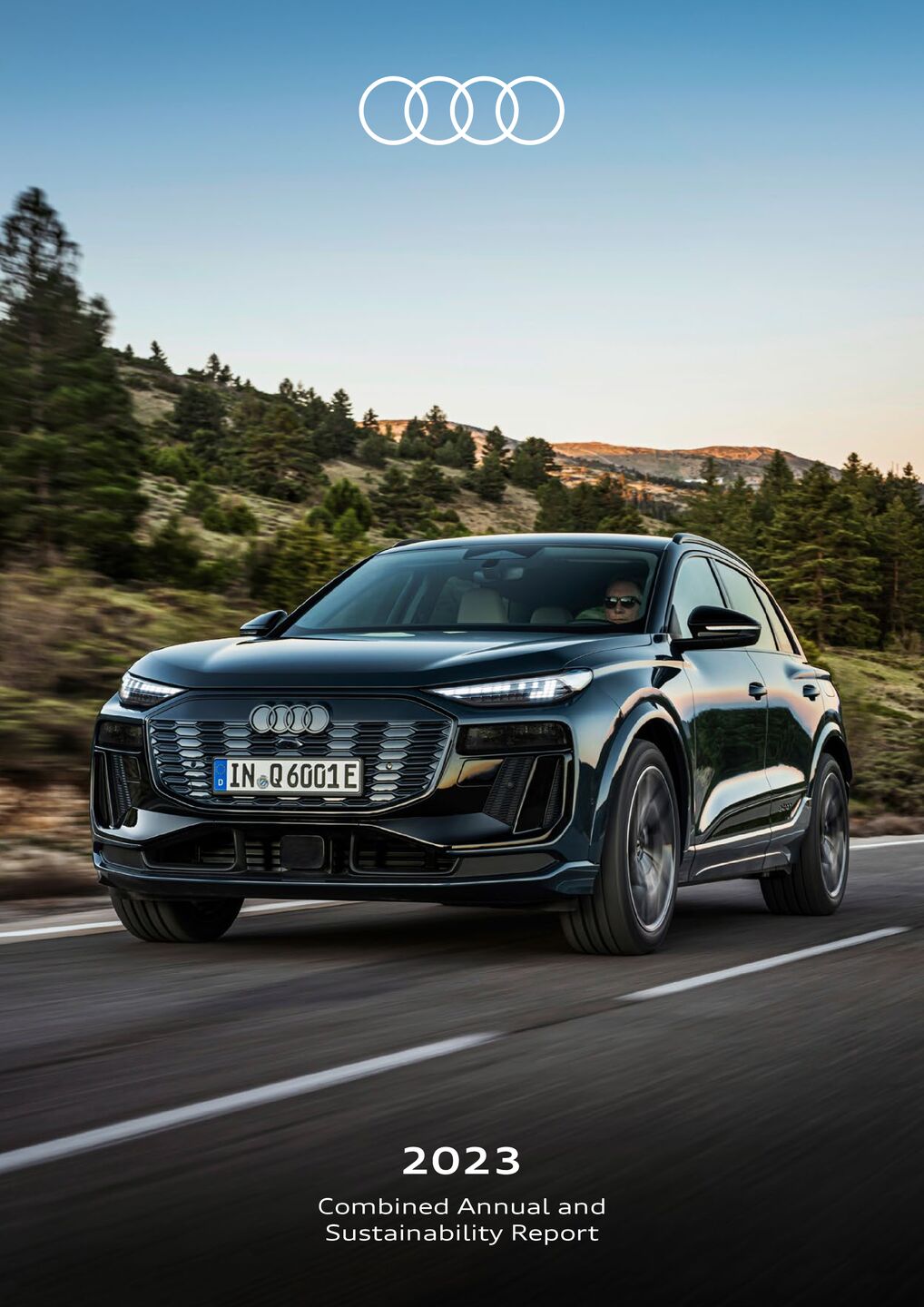 2023: Combined Annual and Sustainability Report
2023: Combined Annual and Sustainability Report
At the same time, it impresses with a holistic interior experience and many technical features in the areas of lighting technology, infotainment and digital services. All of this is possible thanks to the newly developed E³ and PPE architectures. Ph ot o: A U D I A G Strategy & Company Finance ESG Appendix Thanks to the Premium Platform Electric (PPE), the Audi Q6 e-tron features perfect proportions. The relationship between the long wheelbase and very short overhangs forms the basis for the familiar powerful, dynamic package of the Audi Q models on the exterior. In addition, the electric SUV embodies the evolved e-tron-specific design language. Inside, customers enjoy a fully connected digital interior with the new E³ 1.2 electronics architecture. At its heart is the digital stage consisting of the Audi MMI panoramic display and the MMI front passenger display. These clearly arranged displays blend perfectly into the design concept and give the interior a spacious and airy feel. The slim, free-standing Audi MMI panoramic display features a curved design and OLED technology. It consists of the 11.9-inch Audi virtual cockpit and the 14.5-inch MMI touch display. The MMI front passenger display has a 10.9-inch screen. Thanks to Active Privacy Mode, the person in the passenger seat can, for example, watch movies or stream series without distracting the driver. The optional augmented reality head-up display reflects a large inclined image plane beyond the windshield, showing relevant information such as speed, traffic signs or assist and navigation symbols. The image plane is tilted forward to enhance the effect of augmented reality. The focus of the human eye follows along. This process and the large virtual image distance give the im‑ pression that all elements shown float at a distance of up to 200 meters and interact directly with elements in the surroundings.
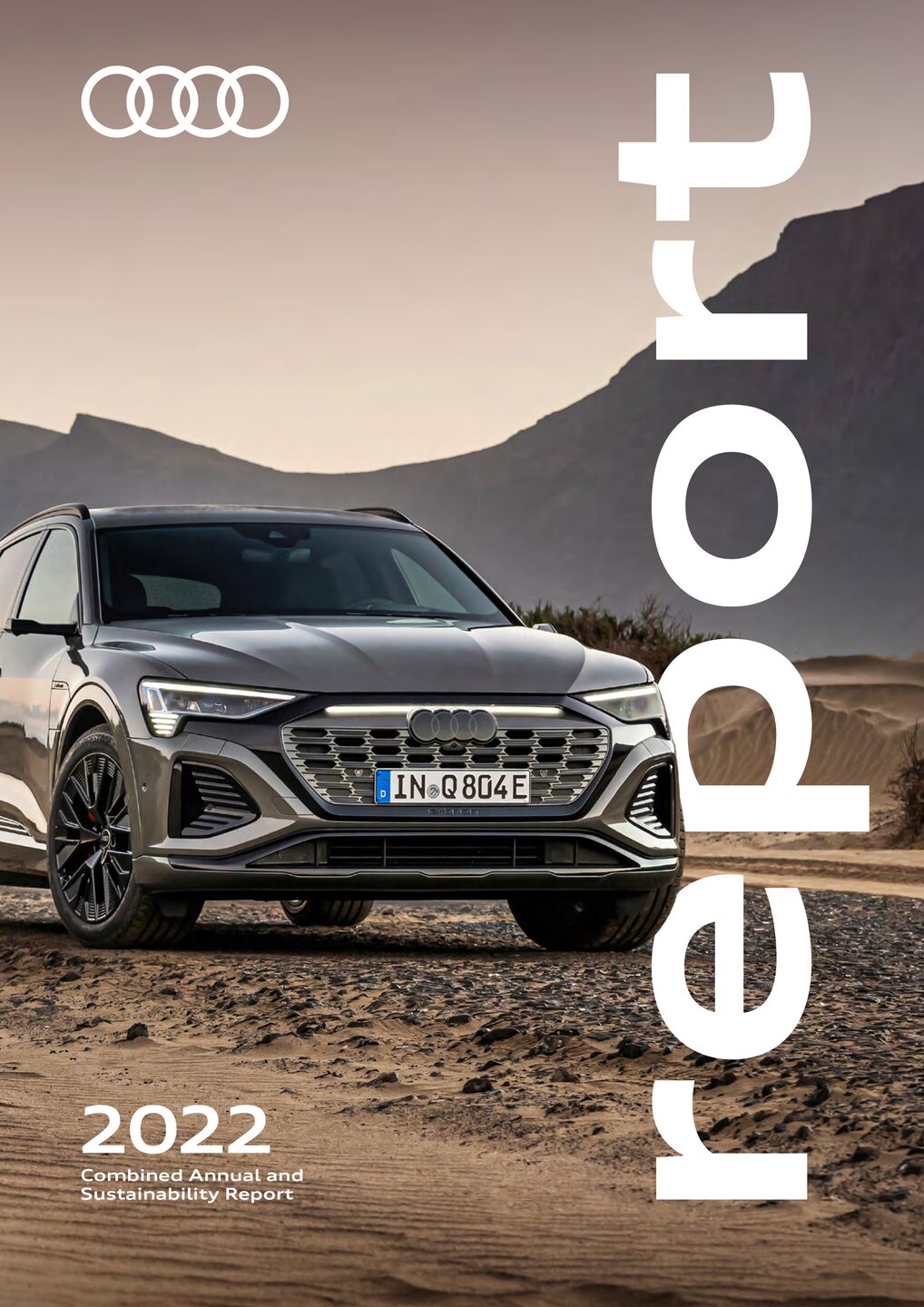 Audi Report 2022
Audi Report 2022
Outside of China also, the Premium brand group had to face a number of logistics constraints, primarily in the area of truck freight due to a lack of drivers as well as in rail traffic and sea freight. The war in Ukraine and the resulting sanctions imposed on Russia also had a negative impact from an economic perspective. For example, the Audi Group ceased all vehicle deliveries to Russia. In addition, the supply of cable harnesses and other components from Ukrainian suppliers was also restricted at times. The Premium brand group remained generally faithful to the experienced and highly competent supplier network in Ukraine and therefore maintained the supplier relationships as far as possible. In parallel, Audi established suitable duplication sites as part of its efforts to 25 Audi Report 2022 Products & Services Value Creation & Production Operations & Integrity Strategy Employees & Society Introduction Appendix World Economy • Lower positive growth of the global economy compared with the prior year • National economic performance dependent on factors such as the impact of the Russia-Ukraine war and the effects of the coronavirus pandemic • Significant year-on-year increase in energy and commodity prices • Rising inflation worldwide as a result of more restrictive monetary policy coupled with interest rate hikes in many countries • Large losses on the main stock and bond markets due to the muted economic outlook Car market • Global demand for vehicles at the prior-year level • Heterogeneous growth in the world regions due to the varying degrees of impact of the war between Russia and Ukraine and the effects of the corona- virus pandemic • Continuing supply shortages for semiconductors and other individual primary products with a gradual improvement over the course of the year Economic environment In fiscal year 2022, the global economy exhibited slightly positive growth, although the pace slowed significantly.
 Anniversary Dates 2023
Anniversary Dates 2023
The development engineers managed to strike the perfect balance between a pure sports car offering breathtaking performance and a reliable road vehicle which could also easily be driven in rush-hour traffic. The body of the Sport quattro was made of aramid and fibreglass-reinforced plastic as well as carbon fibre/ Kevlar composite materials and, due to the small number of units, it was made at the bodywork company Baur in Stuttgart. The corresponding plastic body parts were supplied by the Swiss company Seger + Hoffmann. The first vehicle in the small series of 214 units was built in February 1984. Presentation of Audi Sport quattro40 years Audi Tradition 12 Anniversary Dates 2023 Death of Stieler v. Heydekampf Dr. Ing. Gerd Stieler von Heydekampf died on 25 January 1983. The long-standing Chairman of NSU Werke AG was born on 5 January 1905 in Berlin. After studying mechanical engineering, he worked for Adam Opel AG where he was responsible for the purchasing division. In 1938, he became head of the Opel truck plant in Brandenburg. In 1942, von Heydekampf moved to Henschel & Sohn in Kassel. He joined NSU Werke AG in Neckarsulm in 1948. In 1950, he became a Board member, responsible for sales. He was appointed Chairman of the Board in 1953. Under his auspices, in the 1950s the Neckarsulm company developed to become the world’s largest motorcycle manufacturer. Forward-looking decisions such as the resumption of car manufacturing at NSU and the development of the rotary piston engine were made during his term in office. Following the merger of NSU with Auto Union and the foundation of Audi NSU Auto Union AG in 1969, Dr. Gerd Stieler von Heydekampf was Chairman of the company until 1971. He retired on 31 March 1971. 40 years Audi Tradition 13 Anniversary Dates 2023 Audi five-cylinder diesel engines In 1976, the second generation of the Audi 100 was presented in a completely new guise.
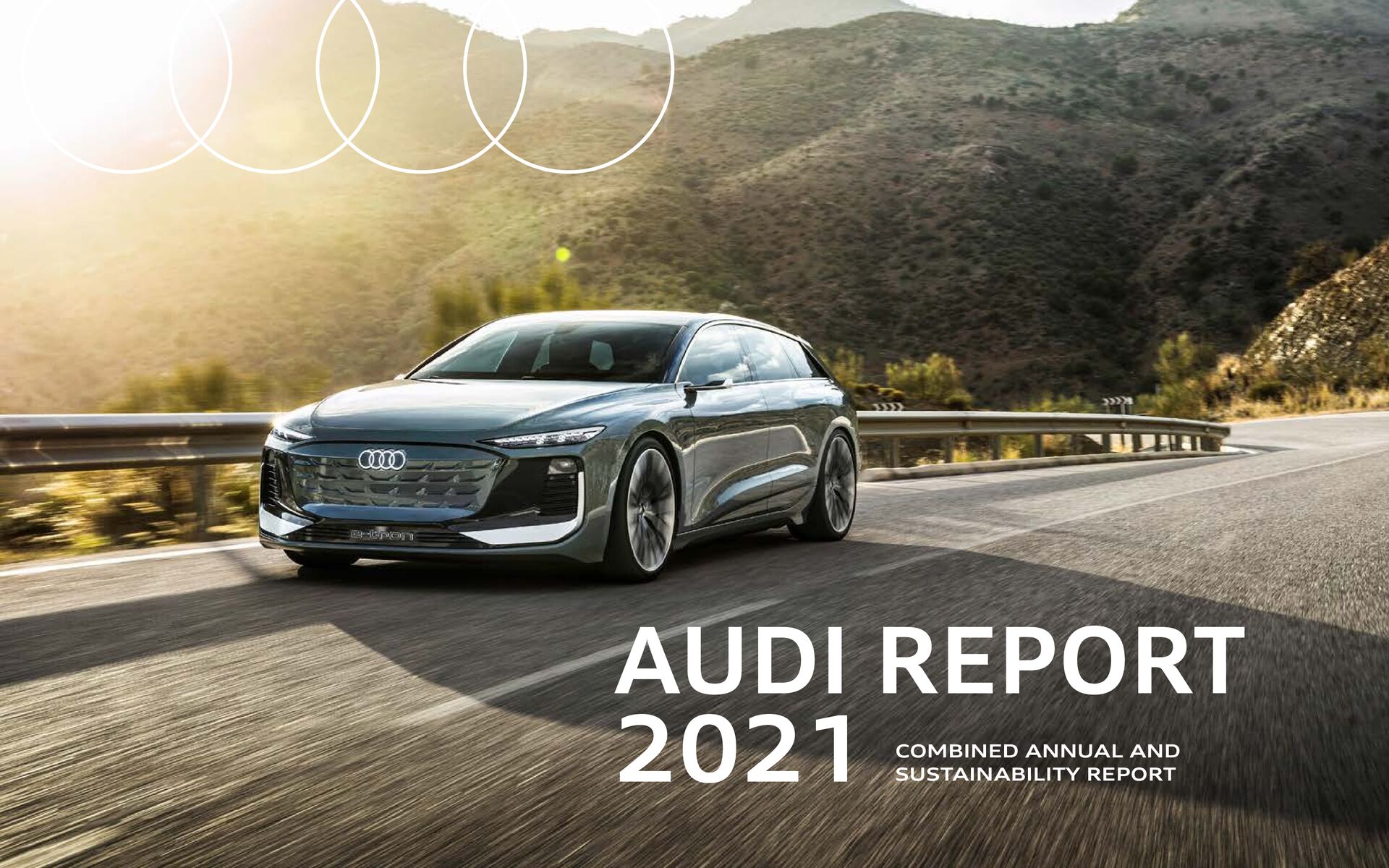 Audi Report 2021
Audi Report 2021
Drivers behind who use the same service can then be sent real-time alerts on dangerous traffic situations such as icy roads. 2026 will be the end of new gasoline and diesel models for Audi. From then on, all new models from the brand worldwide will be fully electric. Audi will gradually phase out the production of vehicles with a combustion engine by 2033. By setting a clear date for focusing entirely on electric mobility, the company is tackling the transformation head-on and strengthening its position as a pioneer and leading innovator in the automotive industry. Expanding electric mobility is an important element in the new Audi strategy “Vorsprung 2030.” Read more on the subject starting on page 19. Audi Report 2021 16.8 percent of managers at the second management level and 8.6 percent at the first management level are women. This means that AUDI AG reached its own targets of 16.0 and 8.0 percent respectively by the end of 2021. These were set by the company in compliance with legislation on the equal participation of women and men in management positions in the private sector. Now it is time to take the next step! The goal for year-end 2025 is to increase the percentage of women to 20.0 percent at the second management level and 12.0 percent at the first management level. This involves consistently implementing the Audi Diversity Strategy, which includes realizing flexible work-time models, expanding job sharing offers, especially in management, and focusing clearly on empowerment. The share of women on the Supervisory Board was already 35 percent as of December 31, 2021, thus exceeding the target set for 2025 of 30 percent. This is to be fulfilled separately by both shareholders and employees. The Supervisory Board has set a formal target for the share of women on the Board of Management of 25 percent by 2025. There were already two women on the Board of Management of AUDI AG at the end of 2021 of seven members in total.
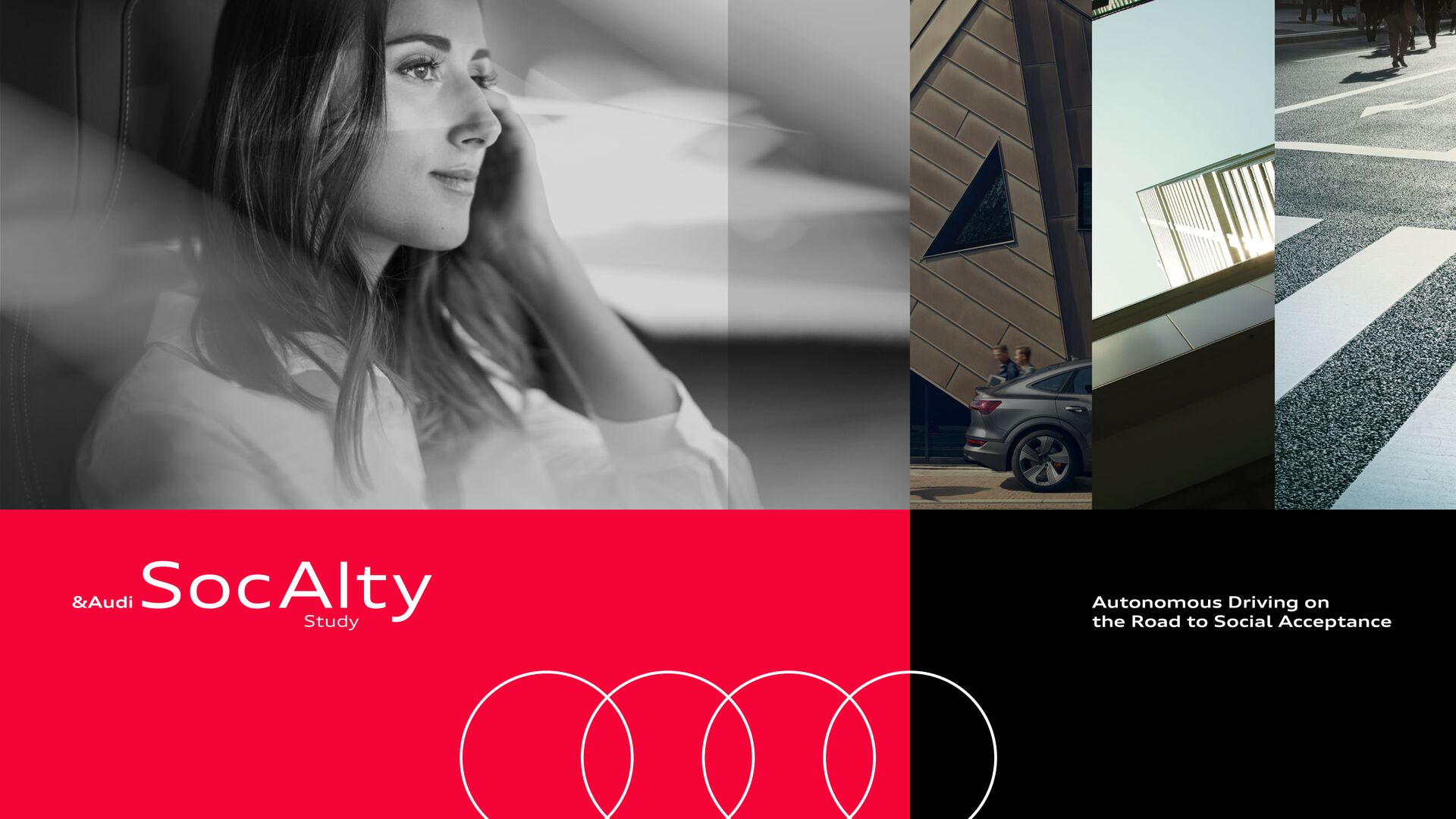 &Audi SocAIty study
&Audi SocAIty study
“Foresight 2030” – “An era of (partially) autonomous mixed traffic”, p. 15). Determining beyond doubt who will ultimately have to pay for any damages or otherwise be legally liable will require answers to a whole host of questions. Was an autonomous system active? In what mode and at what level was the vehicle driving? Did the driver make a mistake? Did the owner fail to meet their maintenance obligations? Did the manufacturer put a faulty vehicle into circulation? Did an IT service company fail? Could the fault possibly lie with a mobile phone provider, network operator or card provider? Or with another part of the infrastructure entirely (e.g. poor roads or traffic lights)? Such questions can be difficult to clarify and could, where there are a multitude of cases, pose a major challenge to the judiciary and tie up a great deal of capacity. For this reason, consideration is already being given to what technical solutions for fault analysis and accident tracking could look like. One option is a kind of “black box” for cars, a type of which already exists today, albeit to a limited extent. Certainly, going forward, sources of error will be much more identifiable than they are today on the basis of constantly produced vehicle data from the on-board systems. It follows, therefore, that the idea of using hardware to record the course of an accident in order to be able to determine afterwards beyond doubt the cause of an accident is not entirely a leap. “The crucial point is that the human should not be responsible for the driving, if it’s a true self driving vehicle.” Jessica Uguccioni CompaniesUsersOwners In principle, persons or service providers (e.g. shuttle service operators) are liable in the event of damage. They bear sole responsibility in particular if they have failed to meet their obligations as the owner. In the event of damage caused by human error, the person may be held jointly liable.
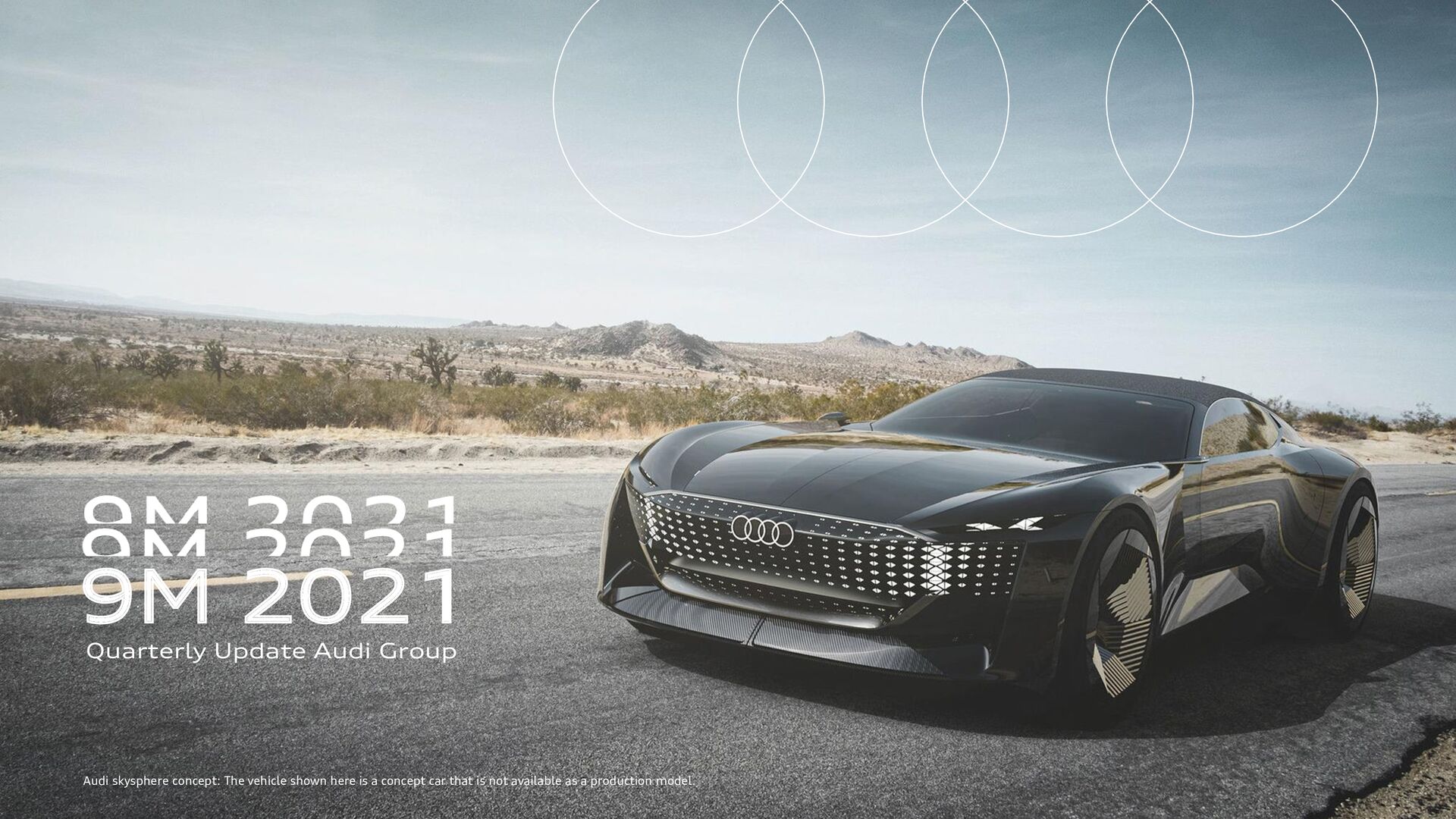 Quarterly Update Audi Group
Quarterly Update Audi Group
Since September 1, 2017, type approval for certain new vehicles has been performed in accordance with the Worldwide Harmonized Light Vehicles Test Procedure (WLTP), a more realistic test procedure for measuring fuel consumption and CO2 emissions. Since September 1, 2018, the WLTP has gradually replaced the New European Driving Cycle (NEDC). Due to the more realistic test conditions, the consumption and CO2 emission values measured are in many cases higher than the values measured according to the NEDC. Additional information about the differences between WLTP and NEDC is available at www.audi.de/wltp. At the moment, it is still mandatory to communicate the NEDC values. In the case of new vehicles for which type approval was performed using WLTP, the NEDC values are derived from the WLTP values. WLTP values can be provided voluntarily until their use becomes mandatory. If NEDC values are indicated as a range, they do not refer to one, specific vehicle and are not an integral element of the offer. They are provided only for the purpose of comparison between the various vehicle types. Additional equipment and accessories (attachment parts, tire size, etc.) can change relevant vehicle parameters, such as weight, rolling resistance and aerodynamics and, like weather and traffic conditions as well as individual driving style, influence a vehicle’s electric power consumption, CO2 emissions and performance figures. Further information on official fuel consumption figures and the official specific CO2 emissions of new passenger cars can be found in the “Guide on the fuel economy, CO2 emissions and power consumption of all new passenger car models,” which is available free of charge at all sales dealerships and from DAT Deutsche Automobil Treuhand GmbH, Hellmuth-Hirth-Str. 1, 73760 Ostfildern- Scharnhausen, Germany (www.dat.de). http://www.audi.de/wltp
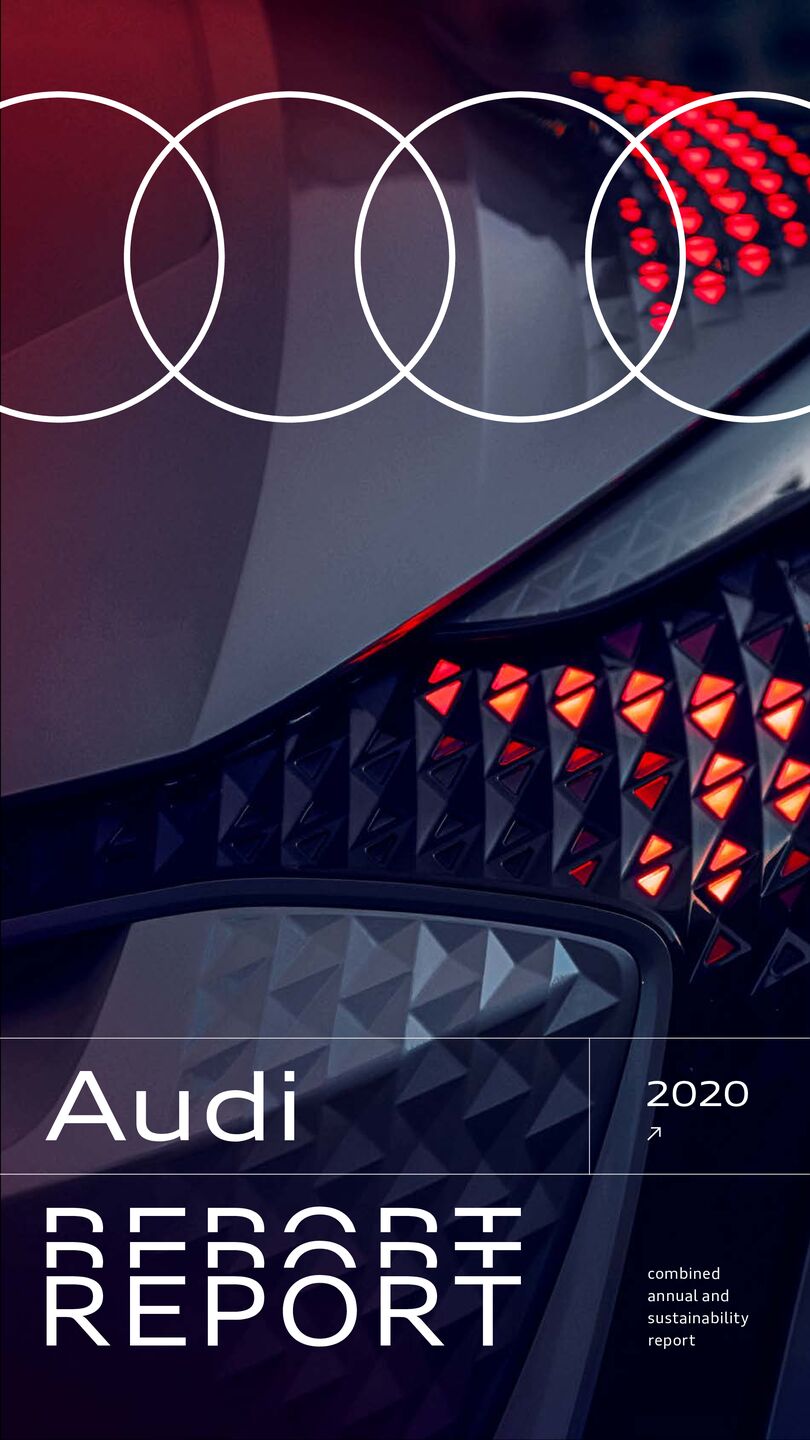 Audi Report 2020
Audi Report 2020
The planner computes the fastest route, takes traffic and route data as well as the driver’s style into account, calculates the duration of the charging stops, and includes them in the total driving time. 3 Audi e-tron GT models: combined electric power consumption in kWh/100 km: 20.2–18.8 (NEDC); combined CO₂ emissions in g/km: 0 Audi Report 2020 163 Il lu st ra ti o n : M a tt h ia s S e if a rt h Products & Services All the electric cars currently available from Audi are also embedded in an intelligent ecosystem: The Audi route planner allows routes to be planned in advance on a mobile phone and then sent to the car. The planner computes the fastest route, takes traffic and route data as well as the driver’s style into account, calculates the duration of the charging stops and includes them in the total driving time. In combination with the Audi e-tron Charging Service, Audi customers in Europe have the bene fit of over 203,600 charging points in 26 countries that they can use with just one card and one contract. Further details about the Audi e-tron Charging Service and its terms and conditions can be found here. There should be a further boost to the range in years to come from innovations to the battery and drive. The power density of the cells will increase, boosting the storage capacity that is possible with a unit occupying the same space or paving the way for smaller, lighter batteries. Both measures can extend the range while cutting material costs. An improved drive is also a factor in increasing the range. For example, Audi aims to reduce the weight of future electric motors by around 20 percent and extend the range by some 10 percent. Whereas some competitors buy in electric drive technology, Audi develops and builds much of it itself. This enables the brand to be sure of its premium quality.
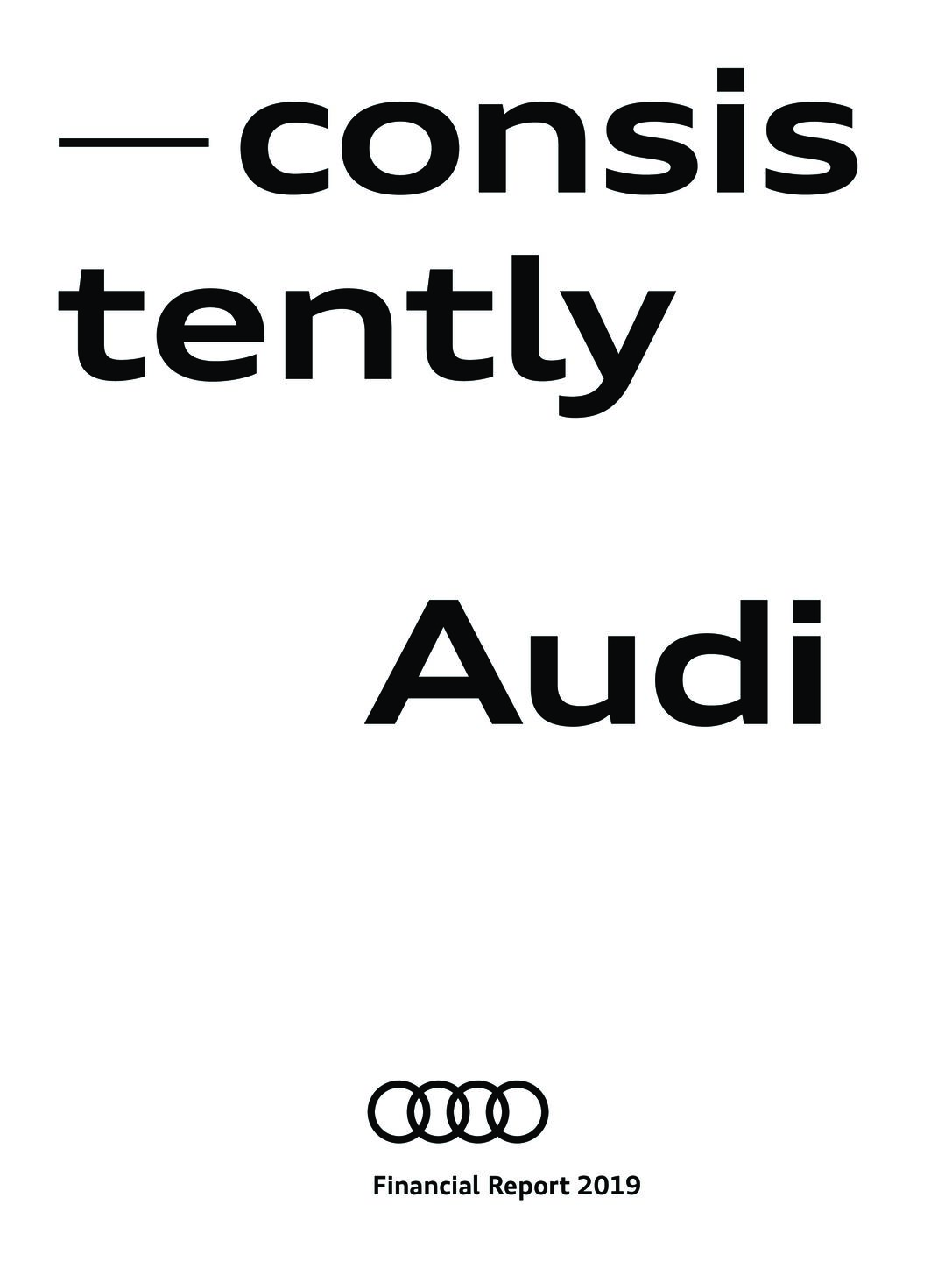 Financial Report 2019
Financial Report 2019
From January through December 2019, the U.S. market for passenger cars and light commercial vehicles, the largest passenger car market in North America, saw 17.0 (17.3) million units newly registered – equivalent to a rate of change of –1.6 percent. Demand continued to shift towards light trucks such as SUV and pick-up models, while the classic passenger car segments contracted. In Brazil, South America’s largest market for passenger cars and light commercial vehicles, the previous year’s volume was increased by 7.7 percent to 2.7 (2.5) million units. In the Asia-Pacific region, the car market contracted substantially by –6.0 percent to 34.0 (36.2) million units in the period under review. The –6.4 percent drop in demand in China, the world’s biggest car market, to 21.3 (22.8) million units was the main reason. The ongoing trade dispute between China and the United States in particular made Chinese consumers reluctant to spend. The Japanese car market likewise showed a negative development compared with the prior-year period. Sales of cars were down –2.4 percent on the previous year, at 4.3 (4.4) million units. / INTERNATIONAL MOTORCYCLE MARKET In 2019, worldwide registrations of new motorcycles in the displacement segment above 500 cc increased by 1.4 percent. The individual markets presented a mixed picture. While the motorcycle market in Western Europe achieved 6.5 percent growth, the number of newly registered motorcycles in the United States – the world’s largest motorcycle market – declined by –6.5 percent. / MANAGEMENT’S OVERALL ASSESSMENT // COURSE OF BUSINESS In the 2019 fiscal year, the Audi Group took further strategic decisions on the future direction of the Company, while business operations were impacted by a large number of challenges on car markets worldwide. One area of focus in the year under review was the introduction of our new “consistently Audi” strategy.